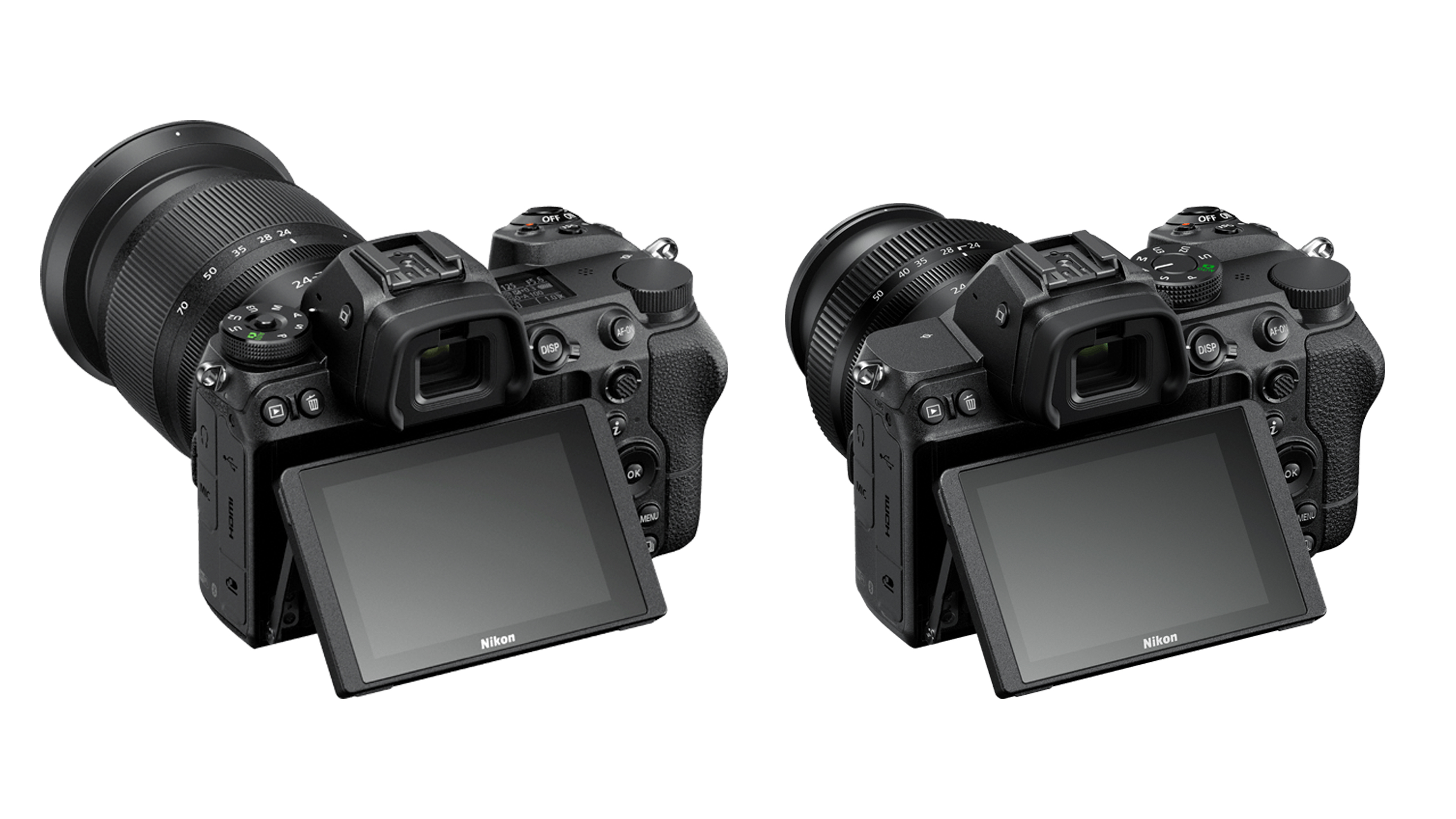Nikon Z6 vs Nikon Z5: Nikon’s affordable mirrorless cameras face off
Is the new Nikon Z5 for you, or are you better off with the more expensive Nikon Z6? That’s what we’re here to find out.


The Nikon Z6 and the new Nikon Z5 may look largely similar. In actuality, however, they are more different than they are alike, which makes choosing between them a much easier task than you would think. A simple inspection of these mirrorless bodies’ specs and features, in fact, might already help you make a decision, especially if you know your way around cameras.
Not that there aren’t similarities here. Beyond that Z6 design that the Z5 has inherited – albeit with a few tweaks here and there – these are two full-frame cameras with the same in-body image stabilization, 273-point hybrid autofocusing system, weather-sealed magnesium alloy construction, and 3.69-million dot electronic viewfinder. Both are also compatible with Nikon’s Z-Mount and F-Mount lenses, expanding every owner’s lens options.
However, the resemblance ends there. With the Nikon Z5 being touted as Nikon’s 'entry-level' full-frame mirrorless camera, there are a few sacrifices made on it to keep the price novice-friendly. And, those sacrifices are more apparent in its specs and capabilities. Still, while its older sibling may come out as the better, faster, more powerful camera, it also has a few aces up its sleeves that may attract the right kind of user – starting with the price.
In the Nikon Z6 vs Nikon Z5 battle, your decision will depend on your application, budget, and skill level.
Nikon Z6 vs Nikon Z5: Price
How big of a price advantage does the Nikon Z5 have over the Nikon Z6? If we’re only talking about the bodies, a difference of £270/$200 is on the table here. Even though Nikon is pushing the Z5 as an entry-level body, its price tag of £1,449/$1,399 doesn’t exactly scream affordable.
It’s hardly entry-level, especially next to the Z6’s direct rival, the Canon EOS RP, which costs £1,399/$1,299 – and that’s already with the Canon RF24-105mm F4-7.1 IS STM lens kit bundled in. Still, it costs less than the Nikon Z6, albeit only a little, with the Z6 retailing at £1,719/$1,599 for the body.
If you’re looking into getting a lens kit, the difference goes beyond the price. While the Z6 is kitted with the Nikkor 24-70mm f/4, raising the price to £2,269/$2,199, the Z5 comes with the new Nikkor 24-50mm lens kit at £1,719/$1,699.
Get all the latest news, reviews, deals and buying guides on gorgeous tech, home and active products from the T3 experts
So, is the Nikon Z5 worth choosing over the Nikon Z6 if it means you’re saving a couple of hundred dollars? Not necessarily. You’ll still have to look at its specs and features before you decide.
Nikon Z6 vs Nikon Z5: Design and Features
As we mentioned earlier, both the Nikon Z6 and the Nikon Z5 share some design aspects. They share the same 3.69-million dot electronic viewfinder and in-body image stabilization (IBIS) inside their rugged, weather-sealed magnesium alloy body.
They look very similar as well, though a closer inspection will show minor differences. For one, the shooting mode dial has been moved from the left of the viewfinder to the right on the Z5. It’s also missing that lock button present on the Z6 to prevent accidental turns.

Personally, we’re used to the shooting mode dial sitting on the left side of the EVF, and this placement distributes the camera’s operation to both hands. With it on the right, it gives the right hand more tasks instead of just focusing on adjusting such things as aperture, ISO and shutter speed, as well as operating the shutter button. Still, this isn’t something hard to get used to, so it’s not a deal-breaker for most users.
Another non-deal-breaker here is the missing top-plate LCD on the Z5. Featured on the Z6, it’s something experienced shooters find useful when adjusting exposure settings. However, it hardly affects the camera’s operability. Plus, the Z5’s target users are certainly not going to miss it.

Something that might turn some people off is the lower resolution rear LCD display. While the Nikon Z6 boasts a 2.1-million dot resolution screen, the Nikon Z5’s only has a 1.1-million dot resolution. Frankly, this isn’t such a big deal to experienced shooters who are used to shooting through the viewfinder. But those who typically shoot via the LCD screen might find this disappointing.
Still, the latter comes with two UHS-II SD card slots – as opposed to the Nikon Z6’s one XQD card slot. If you’ve already amassed a small collection of SD cards, that XQD slot might disappoint you, especially because you also have to invest in a new card reader.
Nikon Z6 vs Nikon Z5: Specs and Performance
The only major things the Nikon Z6 and Nikon Z5 have in common in terms of internals are their Expeed image processor, native sensitivity range of ISO 100 - 51,200, and a 273-point Hybrid AF system that comes with both Eye and Animal Detection AF.
Though both cameras offer around the same 24MP resolution, the Z6 comes with a 24.5MP full-frame CMOS sensor with backside illumination that gives it improved low light performance. The Z5, meanwhile, comes with a brand-new chip 24.3MP CMOS that isn’t back-illuminated, which may affect its performance in low light.

As for the image size, the Z6 produces a slightly bigger 6048 x 4024 (to the Z5’s 6016 x 4016), though that difference isn’t as considerable at the maximum burst speed. While the Z6 offers a fairly impressive 12fps on continuous, the Z5 can only manage up to 4.5fps – a tad too low considering that £270/$200. If you shoot a lot of action, sports, and wildlife images, this new body is definitely not going to suit you.
Just as it won’t video shooters. The Z6 wins in the video department, touting not only 1080p at up to 120p shooting capabilities, but also uncropped 4K at up to 30p. Sadly, the Z5’s 4K at up to 30p gets a 1.7x crop and only lets you shoot 1080p videos at up to 60p, making it more ideal for still shooters than videographers and vloggers.
It does win when it comes to battery life and charging abilities, however. The Z6 is only rated at 380 shots. On the other hand, the Z5 not only comes with a 470-shot rating, but it also uses the EN-EL 15C battery, which allows USB charging. This means that you can bring along with you a power bank or a portable power station to use for uninterrupted shooting when you need it – like when you’re shooting time-lapses. And, that’s on top of the fact that it’s also compatible with Nikon’s MB-N10 battery grip for even more juice.
Nikon Z6 vs Nikon Z5: Lenses
As we mentioned in the price section, the new Nikon Z5 may be bundled with the new Nikkor Z 24-50mm f/4-6.3 lens kit. While we’re not sure how this new lens performs, Nikon does claim that it is the "shortest and lightest full-frame mirrorless zoom lens” on the market right now.
The Nikon Z6, on the other hand, may be bundled with the fairly impressive Nikkor 24-70mm f/4, which obviously offers a longer focal length that gives it more flexibility. Unfortunately, if you want to pair the Nikkor 24-70mm f/4 with the Z5, you’ll have to buy the body and the lens separately, which will cost you considerably more.
The good news is that if and when you’re ready to invest in more lenses, both bodies are compatible with Z-Mount and F-Mount lenses, expanding the choices available to you. Just remember that if you want to use F-Mount lenses on either camera, you’ll need to purchase Nikon’s Mount Adapter FTZ as well.

Nikon Z6 vs Nikon Z5: Our Verdict
Now that you know the main differences between the Nikon Z6 and the Nikon Z5, you should have a better idea of which body suits you best. If you are still at a loss, however, here’s our recommendation: first know what kind of shooter you are or what you will be using your new camera for.
It isn’t as much the design distinctions that matter in your decision-making process as the specifications and performance, unless you are very particular about your LCD and choice of card format.
The Z6 offers a faster maximum burst rate, a back-illuminated sensor, and more advanced video shooting capabilities. That means that if you’re a wildlife, action, or sports shooter, you shoot a lot of videos, or you do a lot of nighttime and low light photography, it’s the one to go for. That relatively small difference in price will be worth it in the long run.
In contrast, the Z5 delivers more versatile charging, a slightly longer battery life, and a marginally cheaper price tag – while touting some of Z6’s great features like that 273-point Hybrid AF system, in-body image stabilization (IBIS), and compatibility with a wide range of lenses. That makes it an excellent proposition for novice shooters who focus on still photography and want to get into the full-frame game while saving a bit of cash.
Liked this?

Michelle Rae Uy is a tech and travel journalist, editor and photographer with a bad case of wanderlust. She is a regular contributor for IGN, TechRadar and Business Insider, and has contributed to Thrillist, Paste Magazine, Nylon, Fodor's and Steve's Digicams. Living mainly in California with her adorable cats, she splits her time between Los Angeles, London and the rest of the world.